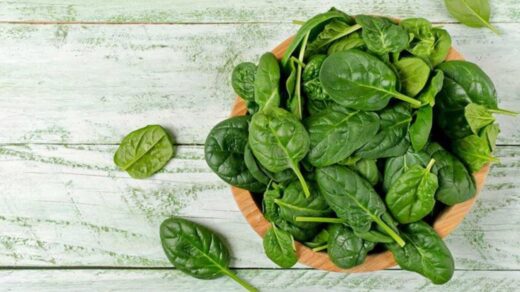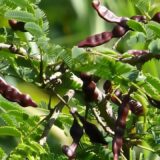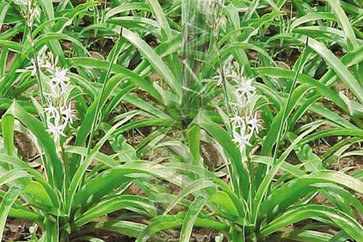Food Poisoning in Ayurveda: Remedies and Prevention
Ayurveda, India’s 5,000-year-old holistic healing system, emphasizes harmony between body, mind, and environment for overall well-being. It views food poisoning not just as a brief illness but as a serious toxin-related imbalance. Known as Garavisha (acute toxicity) or Dushi Visha (chronic, latent poisoning), it reflects both external contamination and the body’s weakened ability to eliminate toxins. Unlike modern medicine, which often treats symptoms, Ayurveda focuses on detoxification and restoring internal balance. This article delves into Ayurvedic perspectives on foodborne illnesses, including diagnostic approaches, herbal treatments, dietary guidelines, and lifestyle practices to support healing and long-term digestive health.
Unlike modern medicine, which often treats symptoms, Ayurveda focuses on detoxification and restoring internal balance. This article delves into Ayurvedic perspectives on foodborne illnesses, including diagnostic approaches, herbal treatments, dietary guidelines, and lifestyle practices to support healing and long-term digestive health.
Preventive measures and seasonal awareness also play key roles in maintaining balance. Understanding these principles can empower individuals to heal naturally and holistically.
Ayurvedic Concepts of Poisoning
Ayurveda classifies poisoning (Visha) into three categories—natural, artificial, and compound—each disrupting the body’s doshas, with detailed treatments outlined in Agada Tantra.
1. Garavisha: The Artificial Poison
Garavisha, derived from gara (artificial substance) and visha (poison), refers to toxins formed from spoiled food, chemical exposure, or incompatible food combinations. As described in the Charaka Samhita (Chikitsa Sthana 23), it is a cumulative poison that gradually disrupts digestion (agni) and blood tissue (rakta dhatu). Unlike acute poisoning, Garavisha develops over time, with symptoms such as:
- Chronic fatigue
- Bloating and indigestion
- Skin allergies and respiratory issues
Mechanism: Toxins (ama) accumulate and block bodily channels (srotas), impairing nutrient absorption and sparking systemic inflammation.
It particularly affects individuals with weak digestion or poor dietary habits.
2. Dushi Visha: The Latent Toxin
Dushi Visha—meaning “smoldering” or latent poison—acts subtly over time, corrupting the blood and tissues. It is often linked to long-term exposure to environmental toxins, pesticides, or processed foods and may lead to autoimmune-like disorders:
- Psoriasis, eczema, urticaria
- Chronic inflammatory conditions (e.g., arthritis)
- Mental health disturbances (anxiety, phobias)
Its slow, persistent action makes it difficult to detect but deeply harmful if left untreated.
Over time, it weakens ojas (vital energy), reducing overall resilience.
3. Kritrima Visha: Synthetic Poisons
Kritrima Visha, referenced in Yogaratnakara, refers to artificially created toxins such as food preservatives, synthetic chemicals, and heavy metals. Symptoms typically appear weeks after exposure and may include:
- Jaundice (yellowing of the eyes and skin)
- Bleeding disorders
- Immune system depletion
These toxins challenge the body’s natural defenses and are particularly harmful when exposure is frequent or unnoticed.
They often resist elimination through normal metabolic processes, requiring targeted detoxification.
Symptoms of Garavisha
Garavisha is a type of artificial or compound poison formed from the combination of otherwise non-poisonous substances. In this context, it refers to foods that become toxic due to poor combinations, improper processing, or contamination.
Immediate symptoms (after eating):
- Severe bloating
- Burning sensation
- Itching
- Diarrhea
- Stomach discomfort
- Vomiting
These suggest an acute toxic or allergic reaction, possibly from:
- Food poisoning (bacterial toxins)
- Food allergies or intolerances
- Chemical contamination (like pesticides or additives)
Delayed/chronic symptoms:
- Lack of energy, fatigue, lethargy
- Sleep disturbance
- Depression, anxiety, phobia
- Depleted vision and hearing
- Gradual weight loss
These point toward systemic toxicity or long-term exposure to harmful substances. In Ayurveda, Garavisha doesn’t kill immediately but slowly weakens bodily systems over time, affecting Agni (digestive fire), Ojas (vitality), and mental clarity.
In modern terms, it could reflect:
- Chronic food additive toxicity
- Mycotoxin exposure (from mold-contaminated food)
- Heavy metal poisoning
- Gut dysbiosis due to poor-quality or incompatible food
Symptoms of Garavisha According to Charaka Samhita
- Pandu (Anemia): Loss of vitality, pale skin, low hemoglobin—resulting from malabsorption and toxin accumulation.
- Karshya (Emaciation/Weight Loss): The body becomes weak and lean due to poor nourishment and tissue depletion (Dhatu Kshaya).
- Suppression of Power of Digestion (Agnimandya): Impaired digestion causes undigested food (Ama), which fuels the toxic buildup.
- Visha (Poisoning): The toxic effects slowly permeate all Dhatus (tissues), weakening the system holistically.
- Palpitation of Vital Organs: Irregular heartbeats, anxiety, or even cardiac strain caused by the toxic interference in Prana Vata.
- Flatulence (Adhmana): Sign of disturbed digestion and Vata aggravation.
- Edema in Hands and Feet (Shotha): Toxin accumulation leads to impaired fluid metabolism (Kapha and Meda vitiation).
- Jathara (Obstinate Abdominal Disorders): Possibly chronic constipation, IBS, or inflammatory bowel conditions.
- Chronic Respiratory Disorder: Accumulated toxins weaken the lungs, possibly resulting in Shwasa (asthma-like symptoms).
- Gulma (Phantom or Abdominal Tumor): Hard masses or psychosomatic abdominal complaints due to Vata and Ama.
- Consumption (Kshaya): Could be likened to tuberculosis, chronic fatigue, or even immune deficiency.
- Fever (Jwara): The Body’s attempt to burn off the toxins—a classic symptom of Ama Jwara.
Interpretation: Garavisha doesn’t always act like a typical poison. It silently weakens all systems, especially the digestive (Agni), circulatory (Rasa), respiratory (Prana), and mental faculties (Manas). It is a slow, degenerative process, often missed until major dysfunction sets in.
Detoxification Therapies (Panchakarma) for Garavisha
1. Vamana – Therapeutic Emesis
Purpose: Expel toxins from the upper gastrointestinal (GI) tract, especially from the stomach and lungs.
Procedure: Snehana (Internal Oleation): Ghee administered for 3–7 days to loosen and mobilize toxins.
Vamana Herbs:
- Tamra Bhasma (Copper Calx) – 125–250 mg with honey
- Bitter gourd herbal tea with honey + ghee (natural emetic)
Post-Vamana: Administer Swarna Bhasma (Gold Calx) to neutralize remaining toxins and support rejuvenation.
2. Virechana – Therapeutic Purgation
Purpose: Cleanse the lower GI tract, especially the intestines and liver.
Herbs Used:
- Danti (Baliospermum montanum)
- Trivrit (Operculina turpethum)
Outcome:
- Clears Ama (toxic residue)
- Restores Agni (digestive fire)
- Balances Pitta and Kapha doshas
3. Swarna Bhasma – The Golden Antidote
Preparation: Gold is purified and incinerated (putapaka) with herbal media, producing fine ash (bhasma).
Benefits:
- Acts like a magnet to toxins (Charaka: “as water rolls off a lotus leaf, so does poison from a Swarna Bhasma user”)
- Enhances immunity, mental clarity, and resistance to toxins
- Ideal for those who frequently eat out or are exposed to low-quality food.
Dosage:
- 125 mg/day with honey
- For 2–3 weeks, up to 2–3 times/year
Caution:
- Only use under qualified Ayurvedic supervision
- The quality and authenticity of Swarna Bhasma is crucial due to its metallic nature
Key Herbs and Formulations in Detoxification
1. Detox Herbs
- Kutki (Picrorhiza kurroa): Known for its liver rejuvenating properties. Kutki is particularly effective in treating jaundice and other liver ailments.
- Manjishta (Rubia cordifolia): A powerful blood purifier, commonly used for skin disorders and to detoxify the lymphatic system.
- Neem (Azadirachta indica): Renowned for its antimicrobial and antifungal properties, Neem is a natural detoxifier that supports overall immunity.
- Haritaki (Terminalia chebula): Often called the king of herbs for digestion, Haritaki is a mild laxative and post-meal digestive tonic, aiding in the removal of toxins from the gastrointestinal system.
2. Classical Formulations
- Pippalyadi Agada: A detox tea made with long pepper, coriander, and cardamom. This formulation is used to boost digestion and clear mild toxicity.
- Saindhavadi Yoga: A potent combination of rock salt, black pepper, and lemon seeds. It is used to neutralize food-borne toxins and improve digestion.
- Gandhaka Rasayana: Formulated with purified sulfur, Gandhaka Rasayana is an excellent remedy for chronic inflammation and helps clear residual toxins from the body.
Ahara (Diet) for Detoxification and Garavisha Management
In Ayurveda, Ahara (diet) plays a fundamental role in detoxification and maintaining the balance of Agni (digestive fire). Proper food choices, as well as meal timing and rituals, can significantly support the detox process and prevent the accumulation of toxins like Garavisha.
1. Recommended Foods for Healing and Detoxification
To restore balance and cleanse the body, it’s important to consume foods that are easy to digest, promote Agni, and support the body’s natural detox processes. Below are key food categories:
- Grains: Rice and kodo millet are easily digestible and soothing for the stomach, making them ideal for detox diets. These grains help to strengthen digestion without overwhelming the system.
- Herbs: Ginger, turmeric, and cumin are all digestive stimulants that help kindle Agni (digestive fire). They also possess anti-inflammatory properties that support the removal of toxins from the body. Ginger is especially helpful in reducing bloating and discomfort, while turmeric aids in reducing inflammation caused by toxins.
- Fruits: Pomegranate and amla (Indian gooseberry) are rich in Vitamin C, which boosts immunity and supports the detox process. These fruits also have antioxidant properties that help cleanse the body and rejuvenate tissues.
2. Foods to Avoid
Certain food combinations and types of food should be avoided, as they can exacerbate the accumulation of toxins and disrupt Agni:
Viruddha Ahara (Incompatible Food Combinations):
- Dairy + Fish: This combination is considered highly incompatible and difficult to digest, potentially leading to the formation of Ama (toxic residue) in the body.
- Honey + Ghee: Though both are generally beneficial, their combination can disturb the digestive process and cause imbalances in the body.
Processed, Fermented, or Stale Foods:
- These foods are considered tamasic (dull, heavy) and can clog the digestive system. They slow down metabolism and contribute to toxin accumulation, hindering the body’s natural detox processes.
3. Pre-Meal Rituals
Ayurveda emphasizes the importance of rituals that prepare the body for optimal digestion. One simple yet effective pre-meal practice is:
Chew ginger with rock salt before meals:
- This combination is known to activate the digestive fire (Agni), ensuring better absorption of nutrients and more efficient detoxification. The pungency of ginger and the saltiness of rock salt stimulate the digestive enzymes and prime the body for digestion.
By following these dietary guidelines and rituals, you can significantly enhance your detox process, support digestion, and prevent the buildup of harmful toxins. In conjunction with Panchakarma therapies and herbal remedies, a clean, balanced diet accelerates healing and restores Agni to its natural state
Vihara (Lifestyle) for Detoxification and Garavisha Management
In Ayurveda, Vihara refers to lifestyle practices that support overall health, balance the doshas, and enhance the body’s natural detoxification processes. Along with the right diet and therapies like Panchakarma, healthy lifestyle practices play a crucial role in maintaining harmony and promoting detoxification.
Recommended Lifestyle Practices
1. Yoga:
Yoga asanas can stimulate detoxification by improving circulation, digestion, and the removal of metabolic waste products (Ama). Specific poses that help detoxify and activate the digestive system include:
Twists, such as Ardha Matsyendrasana (Half Lord of the Fishes Pose):
- This posture involves a deep spinal twist, which helps to massage the abdominal organs and stimulate the liver, aiding in the detoxification process. It also encourages the release of toxins stored in the digestive tract.
Pranayama (Breathing Techniques):
- Incorporating breathwork such as Kapalbhati or Anulom Vilom helps in increasing oxygen supply to the organs, improving the overall efficiency of detoxification at a cellular level.
2. Meditation:
Stress is a major contributor to toxin accumulation, particularly in the form of Ama. Engaging in regular meditation helps reduce stress and emotional blockages, thus supporting mental clarity and emotional detoxification.
- Mindfulness meditation and guided relaxation techniques help calm the mind, which in turn reduces stress-induced toxin accumulation. By promoting a peaceful state of mind, meditation enhances the body’s natural healing abilities and promotes the efficient processing and elimination of toxins.
3. Sleep:
The timing of your sleep cycle is crucial for detoxification. Ayurveda links certain times of day and night to specific organs and their detox processes.
Early bedtime (around 10 PM):
- According to Ayurvedic wisdom, the body’s liver detoxification cycle begins around 10 PM, and aligning your sleep with this rhythm can maximize the liver’s ability to clear out toxins. By resting early, you support the body’s natural detoxification rhythms and improve metabolic function.
- Quality sleep is essential for the restoration of the body’s balance and the regeneration of tissues, so ensure you’re getting enough rest for optimal health.
Skin Allergy Management in Ayurveda
Skin allergies, often presenting as rashes, itching, redness, or swelling, can be caused by various factors, including environmental allergens, food sensitivities, and toxic accumulation in the body. In Ayurveda, the approach to managing skin allergies aligns with the broader concept of detoxification and balancing doshas, particularly Pitta and Kapha.
Ayurvedic External Remedies for Skin Allergies
Topical applications can help soothe inflammation, reduce itching, and cleanse the skin of toxins that contribute to allergic reactions. The following oils and pastes are commonly used:
- Nalpamaradi Taila: A traditional Ayurvedic oil known for its anti-inflammatory and skin-soothing properties. It helps in alleviating itching and redness associated with skin allergies.
- Neem Oil: Neem is a powerful antibacterial, antifungal, and anti-inflammatory herb. Its oil is widely used to treat skin allergies, reduce swelling, and promote healing of affected areas.
- Pongamia Oil: Known for its antioxidant and anti-inflammatory properties, Pongamia oil can be massaged onto the skin to reduce irritation and promote skin healing.
- Turmeric Paste: Turmeric is a revered herb in Ayurveda with strong anti-inflammatory and antioxidant properties. A paste made from turmeric powder can be applied locally to reduce swelling, redness, and irritation in allergic skin conditions.
- Sesame Oil and Turmeric Massage: A soothing blend of sesame oil and turmeric can be used for a detoxifying massage. Mix a cup of sesame oil with a tablespoon of turmeric powder and gently massage onto the skin to calm irritation and support the skin’s natural healing process.
Ayurvedic Internal Remedies for Skin Allergies
Internal Ayurvedic medicines work to balance the doshas and address the root cause of skin allergies, whether they are related to food, environmental factors, or internal toxin buildup. The following formulations are commonly used based on symptoms:
- Haridra Khanda: A classical Ayurvedic formulation containing turmeric (Haridra), known for its potent anti-inflammatory and immune-boosting effects. It helps cleanse the blood and reduce allergic reactions.
- Lakshmi Vilas Ras: A well-known Ayurvedic formulation used to manage Pitta imbalances and promote overall skin health. It is particularly effective for conditions like eczema and skin rashes.
- Aragwadharishta: This herbal tonic is used to detoxify the body and treat skin allergies caused by Pitta and Kapha imbalances, improving the complexion and soothing irritated skin.
- Khadirarishta: Khadira (Acacia catechu) is known for its blood-purifying properties and is commonly prescribed for skin conditions like itching, rashes, and eczema.
- Gandhaka Rasayana: A classical formulation containing purified sulfur that helps in detoxifying the skin and treating chronic inflammatory skin conditions, including allergies.
- Arogya Vardhini Vati: This combination of herbs is used for detoxification, particularly to clear Ama (toxins) from the body, improving skin health and reducing allergic reactions.
- Vilwadi Gulika: A well-known Ayurvedic medicine for treating skin rashes and allergic conditions, particularly those that involve Kapha and Pitta doshas.
- Sanjivani Bati: A highly revered formulation that enhances overall vitality and immunity, making it effective for the systemic treatment of allergies, including skin conditions.
- Kaishora Guggulu: A potent detoxifying formulation that helps in managing skin allergies and conditions like eczema by clearing toxins and balancing Pitta and Kapha doshas.
Prevention and Long-Term Care
Prevention and long-term care are integral aspects of Ayurvedic treatment. Rather than merely addressing symptoms, Ayurveda emphasizes creating a lifestyle and habits that promote balance and vitality. This holistic approach ensures that you don’t just heal from ailments like Garavisha or skin allergies, but also maintain long-term health and wellness.
Mindful Eating Practices
Mindful eating is at the core of Ayurveda, where the focus is on eating consciously and with awareness of how the food supports the body and mind. This principle not only helps with digestion and detoxification but also plays a significant role in preventing imbalances and chronic conditions.
Sattvic Diet:
A Sattvic diet is considered pure, clean, and harmonious. It is ideal for maintaining mental clarity, emotional balance, and physical health. A Sattvic diet includes:
- Fresh, organic, home-cooked meals: These meals are free of preservatives, chemicals, and excessive processing, making them nourishing for the body. Freshly prepared food supports digestion and enhances overall well-being.
- Wholesome foods: This includes fresh fruits, vegetables, whole grains, nuts, seeds, and plant-based proteins. These foods are light, easy to digest, and help sustain energy levels.
- Foods to favor: Turmeric, ginger, cumin, and coriander are commonly used in Sattvic meals, as they stimulate digestion and enhance detoxification.
By consistently following a Sattvic diet, you can support your digestive fire (Agni), which is central to preventing the accumulation of toxins like Ama (toxic residue) in the body. A balanced diet helps to strengthen immunity, promote mental clarity, and maintain healthy skin.
Seasonal Eating (Ritu Ahara)
Ayurveda recommends seasonal eating, aligning your diet with the changing seasons (Ritu) to prevent doshic imbalances. This practice helps in adapting the body to the environmental changes, improving digestion, and preventing the onset of allergies or other health issues.
- Summer (Grishma Ritu): Focus on cooling foods like cucumbers, melons, and dairy, as well as refreshing drinks like coconut water.
- Winter (Hemanta Ritu): Opt for warming, grounding foods like root vegetables, soups, stews, and spices such as cinnamon, ginger, and garlic to balance the cold, dry qualities of the season.
- Monsoon (Varsha Ritu): Choose foods that are light and easy to digest, such as khichdi (a mix of rice and lentils), to support digestion during the damp, heavy season.
By eating in tune with the seasonal rhythms, you reduce the chances of Pitta and Kapha imbalances, which are often at the root of conditions like skin allergies and digestive issues.
Regular Detox
In Ayurveda, regular detoxification is a vital part of long-term health maintenance. Panchakarma is a powerful Ayurvedic therapy designed to cleanse and rejuvenate the body. By incorporating regular detox treatments, you can reset your digestion, immunity, and overall vitality.
Annual Panchakarma:
- Purpose: Panchakarma involves a series of therapeutic treatments that cleanse the body of accumulated toxins (Ama), reset Agni (digestive fire), and rejuvenate the tissues. It is highly recommended on an annual basis to maintain health, prevent chronic illnesses, and boost immunity.
- Process: The five main therapies of Panchakarma—Vamana (vomiting), Virechana (purgation), Basti (enema), Nasya (nasal cleansing), and Raktamokshana (bloodletting)—work together to cleanse both the body and mind. These therapies are individualized based on the person’s doshic imbalance and health condition.
- Benefits: Regular Panchakarma cleanses the body at a deep level, restores energy, and enhances the body’s natural ability to fight infections and heal. It also helps in balancing the doshas and alleviating chronic conditions, such as Garavisha and skin allergies.
Rasayana Therapies (Rejuvenation)
Ayurvedic Rasayana therapies are designed to promote longevity, vitality, and mental clarity. These rejuvenators help to rebuild the tissues, boost immunity, and support the natural healing processes of the body.
- Chyawanprash:
A time-honored Rasayana tonic that is rich in antioxidants, vitamins, and minerals. Chyawanprash strengthens the immune system, supports digestion, and enhances overall vitality. It is especially beneficial when taken regularly to prevent the recurrence of ailments like skin allergies and digestive issues. - Other Rasayana Herbs:
Other Rasayana herbs, such as Ashwagandha, Amalaki, and Shatavari, are also used for their rejuvenating and immunomodulatory effects. These herbs help to restore balance, nourish the tissues, and promote long-term health.
By incorporating Rasayana therapies into your yearly routine, you can support your body’s natural detox and rejuvenation processes, enhancing vitality and preventing the buildup of toxins.
Ayurveda teaches that food poisoning is not just a gastrointestinal event but a systemic failure of the body’s intelligence. By addressing root causes—through herbs, diet, and detox—it offers sustainable healing.

























